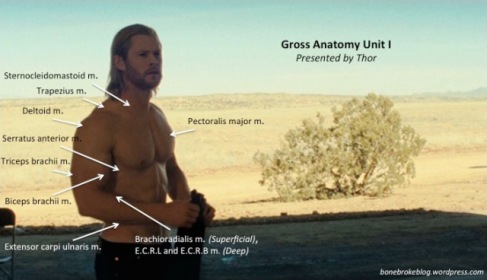Obviously, the title of this post should be sung, Julie Andrews style. Tis the season, or something.
But in all seriousness, science blogging has been in the press a lot lately. Even as these stories demand that we confront the good, the bad, and the ugly of the medium, recent events have highlighted that blogs are increasingly important hotbeds of real and valuable discourse on the state of the field(s). There are lots of sweet archaeology blogs out there these days that prove exactly this point. Here are a couple of my favorites:
Bone Broke: If you’ve paid attention to the job market this year, you have probably realized that bioarchaeology is where it’s at. On her blog Bone Broke, Jess Beck, Phd candidate at the University of Michigan (and, full disclosure, close personal friend and wedding cake baker extraordinaire), offers sound advice for analyzing skeletal materials and cogent takes on bioarch-y current event. Her tips and tricks for siding a calcaneus (the right one looks like a lowercase “r”) and id-ing the pisiform (it looks like a tiny, non-fuzzy bison) provide a terrifically user friendly complement to the standard bone manuals. The sharp prose and accompanying illustrations also make the it a fun read. In short: it’s not just for osteologists, but for anyone interested in the ins-and-outs of data collection, ongoing debates at the intersections of archaeology and biological anthropology, or anatomically labeled pictures of Thor.

Thanks for this Jess Beck, American hero.
Archaeology, Museums, and Outreach: Based out of the C.H. Nash Museum at Chucalissa and the University of Memphis, Robert Connolly’s blog is a boon for anyone looking to learn more about engaging the public in archaeology. Connolly posts include reports on a variety of different cultural heritage projects, reflections on the role of volunteers in museums, and recently, ideas on how to use digital resources in the classroom. It’s always inspiring but never preachy, and offers lots of good ideas for reaching the variety of folks that might be interested in what we do.
Ohio Historical Society Archaeology Blog: Though more focused in scope than the above example, its clear that Brad Lepper and company will never run out of things to cover in their blog for the Ohio Historical Society. Updated almost daily, this repository of Ohio archaeology highlights recent publications, ongoing field and collections-based research, and efforts recognize and preserve Ohio’s remarkable archaeological heritage. Plus, one of their contributors carved a jack-o-lantern in the shape of the Adena pipe, and that is radical.

The Adena Pipe (Ohio’s State Artifact) and its pumpkiny doppelganger, carved by OHS volunteer Sara Nuber. Huge.
Rather than expanding my own list, I’m curious — what are your favorite archaeology blogs? Please recommend some readings, folks!


